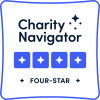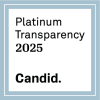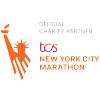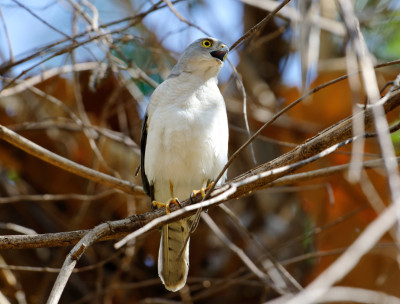Our California Condor team in Arizona regularly performs annual health checks on the individuals in the southwest population, drawing blood to test for lead exposure, examining overall physical condition, and administering vaccines. On November 23, twelve-year-old California Condor 653 was captured for her 2024 annual exam, and her blood-lead came back as elevated to a level worthy of immediate treatment.
Treating condors for lead is a regular part of the work we do for the Arizona-Utah population, so we were prepared to treat Condor 653 in-house. Over a two week period, she underwent two rounds of chelation therapy (a treatment which, in combination with subcutaneous fluids, flushes lead out of the blood). She spent that time in our treatment barn in Vermilion Cliffs National Monument with other birds also undergoing chelation. Luckily, after the second round of chelation therapy, her blood-lead levels dropped significantly, and she was deemed ready for release! On December 8, Peregrine Fund supporters witnessed 653’s breathtaking flight back into the wild.
“Condor 653 had not exhibited any physical signs of lead poisoning, such as lethargy or neurological symptoms, before testing. This underscores the importance of regular testing this time of year—condors often don’t exhibit clinical signs of lead poisoning until it’s too late,” explains Tim Hauck, our California Condor Reintroduction Program Director. “A year-round analysis of blood-lead samples has historically shown a spike in November and December, coinciding with the big game hunting seasons in Arizona and Utah. As such, our team starts regular lead testing in November and continues until observed levels subside.”
Thanks to efforts by the Arizona Game and Fish Department and Utah Division of Wildlife Resources, hunters are leading the way in taking part in the recovery of the Condor by voluntarily switching to lead-free ammunition or removing the remains of shot animals from the field. We are grateful to all that have participated in these programs to make the environment a safer place for scavenging wildlife!






